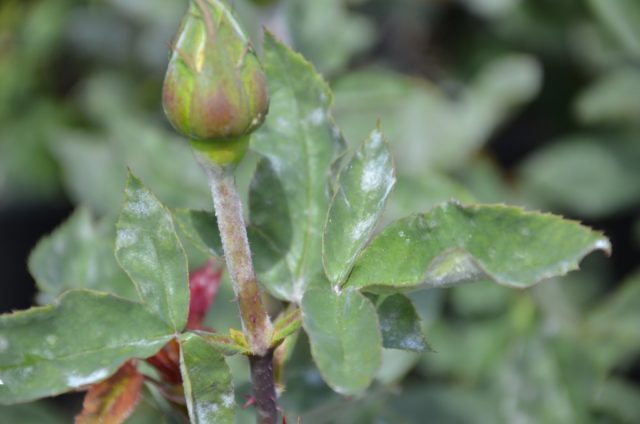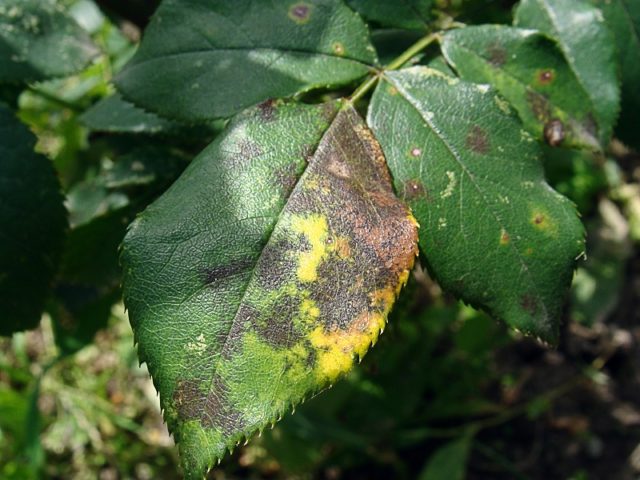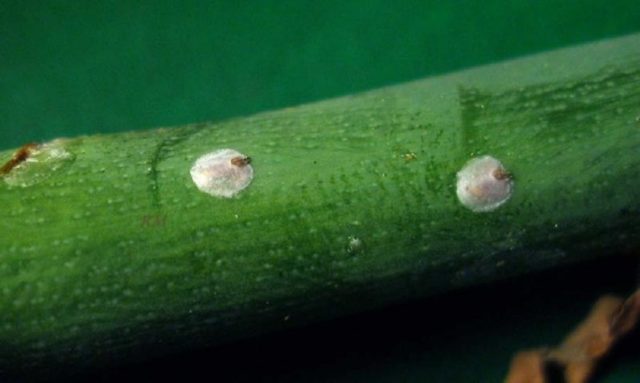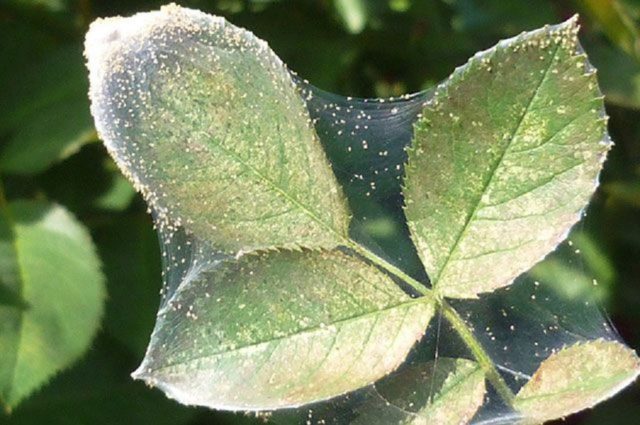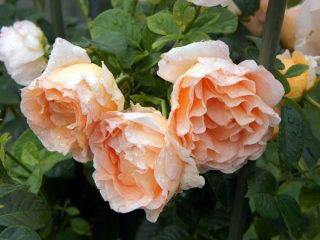Content
A rose with the name "great celebration" can be a bright decoration for any garden. A bouquet of large cut flowers will delight absolutely every girl. Unpretentious in cultivation, resistant to frost and various diseases - this is the description of the Grand Gala hybrid tea rose.
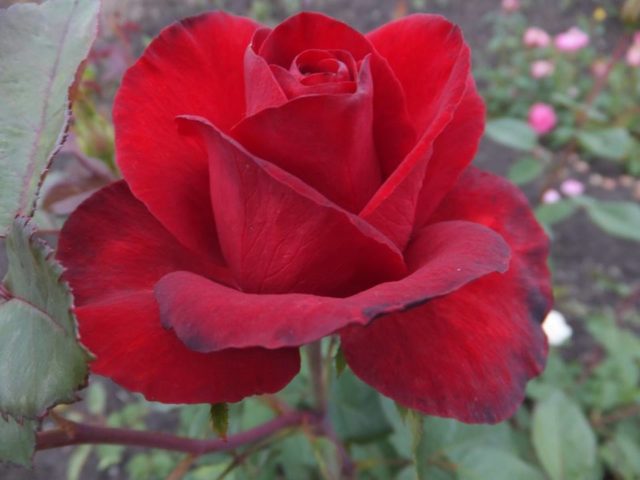
Buds of the Grand Gala variety are very attractive in appearance, have a rich color and velvety surface.
Breeding history
Rosa Grand Gala is a prominent representative of the group of tea hybrids. It was bred in 1995 by breeders of the French company Meilland International. Obtained by crossing Chinese varieties of roses with large buds. At the same time, the hybrid has absorbed only the best qualities from the parents. And, despite the fact that the Grand Gala variety obtained as a result of painstaking work does not have an ancient origin, it still managed to win the recognition of most gardeners who prefer natural semi-wild types of roses. Among the positive qualities, they noted unpretentiousness in care, long and abundant flowering, as well as good resistance to pests.
Description and characteristics of the rose variety Grand Gala
The bush of the hybrid tea rose Grand Gala is not very sprawling, up to 80 cm wide, but rather tall, reaching up to 1.2 m with proper care. Shoots are straight, strong, abundantly covered with dark green foliage with a glossy surface. The height of the peduncles is 40-80 cm. I have few spines, evenly spaced along the entire length. The leaf plates themselves are rather large, filled with juice, with small notches along the edges. During the flowering period, the green mass just ideally complements the dark red or pink buds as a background.
Flowers appear singly on the stem. The variety Grand Gala itself belongs to the re-flowering, its flowering is almost continuous from May to mid-autumn. The buds have a classic shape for hybrid tea varieties, elongated, bowl-shaped. The inflorescence consists of 40-60 rounded double petals, which slowly unfold and, when fully expanded, elegantly bend outward. The diameter of the buds varies from 8 to 12 cm. The color, depending on the species, can be saturated red or pale pink. A distinctive feature of the Grand Gala variety is a spectacular darker dusting of the wavy edges of the petals. The aroma is subtle, subtle, with berry notes, reminiscent of raspberries.
Advantages and disadvantages
As you can see from the photo and description, the Grand Gala rose has many positive qualities, but this hybrid tea variety has its drawbacks.
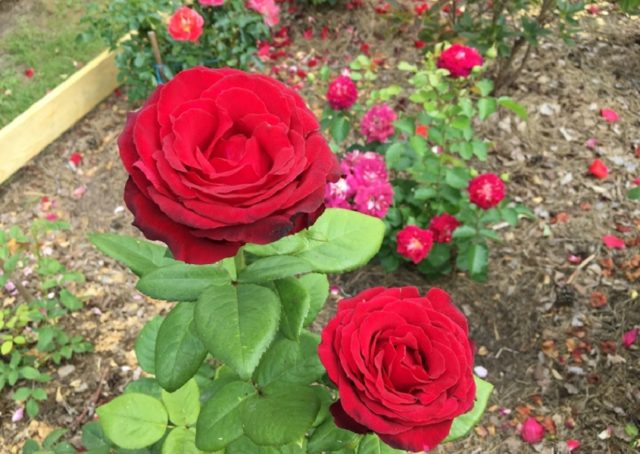
Thanks to very beautiful buds, the Grand Gala rose is used not only in landscape design, but also in floristry.
Pros:
- high decorative effect of the bush;
- large buds of dark red or pink color;
- long and repeated flowering;
- can be grown under the cut;
- unpretentious care;
- ability to withstand low temperatures (USDA frost resistance zone - sixth);
- resistance to powdery mildew and black spot;
- not afraid of pests;
- calmly endure rainy weather;
- buds do not fade under the sun and do not crumble for a long time;
- suitable for cultivation in the open field and in greenhouse conditions.
Minuses:
- poor shade tolerance;
- outdoors for the winter requires shelter.
Reproduction methods
To maximize the preservation of all varietal traits, the Grand Gala pink and red rose is propagated exclusively in a vegetative way. The most popular is the grafting method.
Planting material is harvested in advance from strong young bushes. At the same time, green shoots are used for spring cuttings, and in the fall, lignified annual branches with a diameter of about 5 mm are chosen. In both cases, the segments should not exceed 15 cm. After the cut, all leaves are removed from the planting material, a straight cut is made above the upper bud, and an angular cut under the lower one (45 o). Then the cuttings are kept in a solution of a growth stimulant, and then they are placed in moist soil mixed with sand.
In addition to grafting, you can propagate the Grand Gala rose by dividing the bush. To do this, in the spring, after the snow thaws, dig up and divide the plant into 2-3 parts. Moreover, they must all have roots and shoots. To make the rooting of the planting material faster, the remaining shoots are shortened.
You can also try to propagate the Grand Gala rose by layering. This procedure is carried out in the spring. To do this, the shoots are bent and fixed with staples to the ground, sprinkled with soil. Rooted layers are separated from the mother bush in the fall. As a rule, this method is the most troublesome and less successful.
Growing and care
The most important thing when growing a Grand Gala rose is its correct planting. The place should be chosen sufficiently lit, but with a slight darkening. It is also worth paying attention to protection against through winds.
The soil must be prepared in advance. It will be ideal if the soil has a light and loose structure, otherwise it is advisable to add sand and clay during digging. At the same time, for the Grand Gala hybrid, it is important to have drainage and high soil nutritional value. Therefore, the introduction of organic fertilizers is mandatory.
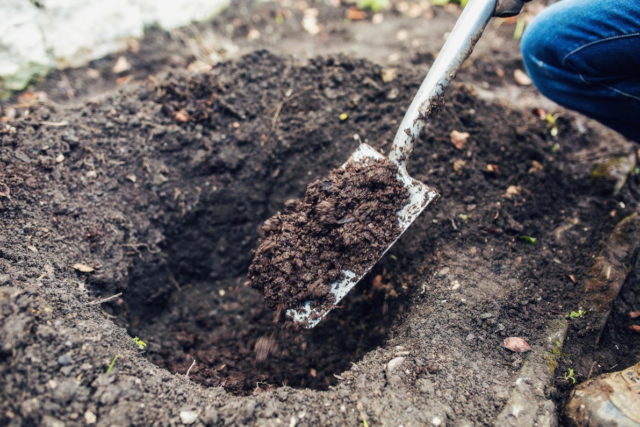
The acidity of the soil should be pH 6-6.5, it can be increased with peat (manure) or reduced by adding lime
The best time to plant the Grand Gala rose is mid-April or May. In autumn, the beginning of September is considered a suitable time, since before the onset of the first frost, the seedling must have time to take root.
Follow-up care after planting consists of timely watering, pruning and feeding. For a good saturation of soil moisture, it is advisable to dig a groove around the trunk. It is necessary to water the bush in the heat at least 1 time in 3 days, and in moderate weather it is enough 1 time per week. After watering, surface loosening of the soil and simultaneous removal of weeds are performed.
Top dressing per season is applied at least 3 times to accelerate the formation of buds and ensure longer flowering. A mixture of organic matter and mineral complexes is used to fertilize the soil. Especially important is the nutrition of the rose during the budding period.
Since all hybrid tea varieties need spring and autumn pruning, the Grand Gala rose also requires this procedure. Before winter, be sure to remove the shoots to the middle, cutting them off above the bud at an angle. In the spring, pruning of damaged stems is carried out. At the same time, the bush does not require special formation, it already looks compact and neat.
For the winter, the bush is covered. This can be done with spruce branches, building a kind of frame, or wrap the plant with dense material, fixing the top and bottom with wire.
Pests and diseases
Despite good immunity, the red and pink Grand Gala rose, with improper care, can be susceptible to the following diseases:
- powdery mildew, characterized by the appearance of a white bloom on the leaves and shoots;
The affected areas are removed, and the bush itself is treated with a copper-containing preparation
- black spot, signs of the appearance of which are brown spots on the upper side of the leaf;
For the treatment of this ailment, a 1% solution of Bordeaux liquid is used
- rust that appears in the spring on the upper part of the stems and leaf plates in the form of orange tubercles.
To combat the disease, a solution of Bordeaux liquid is also used, only 2%
Among the pests that pose a threat to the Grand Gala variety, it is worth noting the following:
- rosaceous scale insect feeding on plant sap;
To eliminate the pest, you can use drugs such as Aktara, Fufanon
- spider mite, which settles on the leaves, as a result of which they turn yellow and fall off.
Against spider mites, a powerful insecticidal drug must be used
Application in landscape design
Rosa Grand Gala is an attractive decorative flowering shrub that looks great both in compositions with other garden plants and in a single planting. It can become the center of a mixborder, or it can be a bright accent on an emerald green lawn as a tapeworm.
Dark red buds will stand out elegantly when placed in a flower bed with lighter shades of flowers. But against the background of other tall varieties of roses, the Grand Gala hybrid can easily get lost.
Conclusion
Rosa Grand Gala, although it belongs to relatively young varieties created by human hands, can still attract the attention of avid gardeners. Its flowers are beautiful not only on the bush, but also in the cut. At the same time, the tea hybrid will not be too much trouble for growing.
